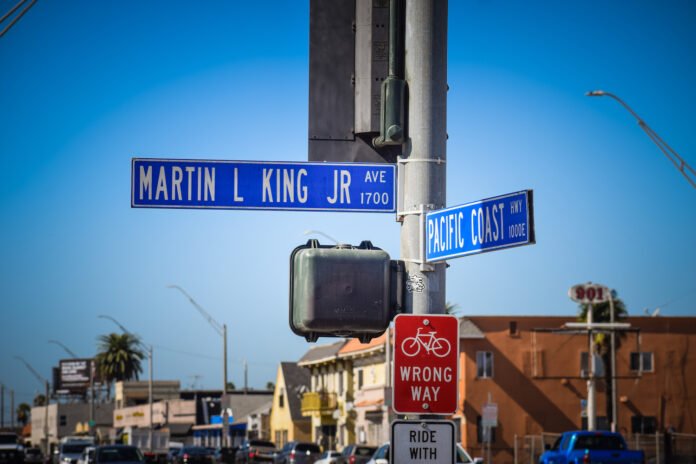The Black community of Long Beach is facing what some are decrying as a cannibalization of its physical and social connections, as redistricting looks to divide the historic Black core of the city. Largely defined geographically as north of 10th Street and south of Willow Street, east of Long Beach Boulevard and west of Walnut Avenue, it is the epicenter of what has been a slowly dwindling Black population.
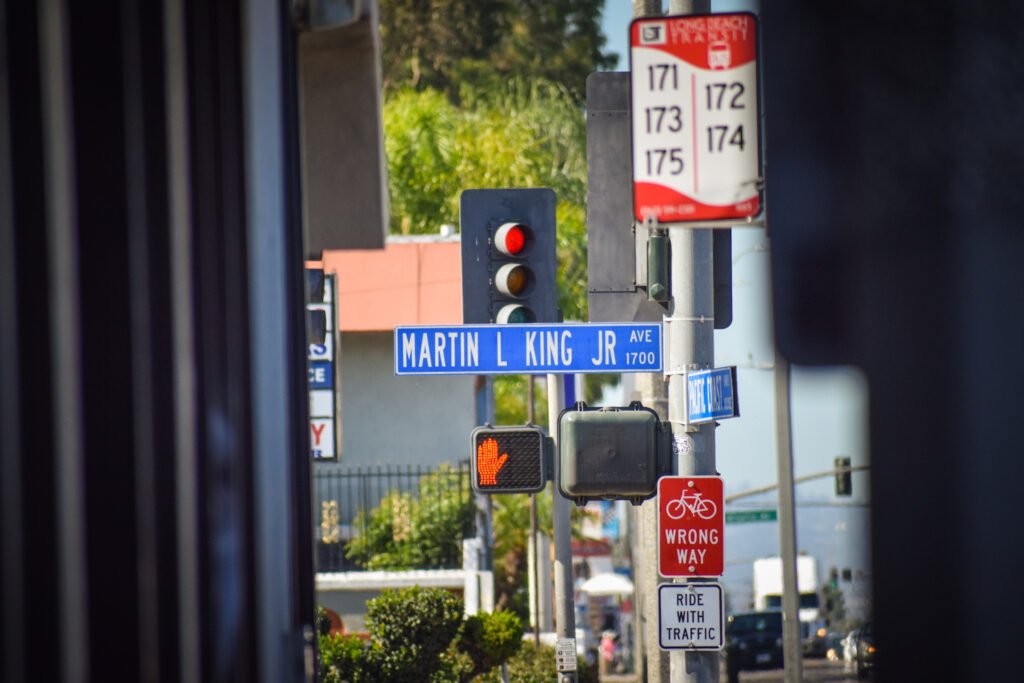
How does redistricting affect the Black community of Long Beach?
Long Beach native and lifelong Black resident of the city’s Sixth District Senay Kenfe stands at the intersection of Long Beach Boulevard and Burnett Street. Living nearby, he stands just a bit northwest of what is largely considered the core of the Sixth, Martin Luther King, Jr. Avenue and Pacific Coast Highway.
“My mother, who lives three blocks away from me, will be in a different district if this map goes through,” Kenfe said, pointing west. “My grandmother, who lives five blocks away from me, she will be in another district,” he continued, pointing east.
“My aunt and uncle?” Kenfe said, pointing south. “They will be in a different district. My entire family will be separated: political- and accessibility-wise. Schools will change. Councilmembers will change. My entire community will be changed. We’re seeing the potential cannibalization of the Black community here in Long Beach.”

Kenfe is referring to the single map put forward by the city’s Independent Redistricting Commission this past week, when it was believed the commission would be introducing multiple maps. While the map released is by no means a final version, concerns have arisen that since only one map was shown for public review thus far, it would receive greater public exposure and political support. (The commission has until Dec. 7 to finalize the map—and much can admittedly happen between then and now if residents and groups continue to speak up and lobby.)
What is the ‘historic Black core’ of Long Beach?
The historic Black core—largely defined geographically as north of 10th Street and south of Willow Street, east of Long Beach Boulevard and west of Walnut Avenue—is home to multiple key points of Black historical significance.
There are two LBUSD schools of significance: Bobbie Smith Elementary, named after the city’s first Black LBUSD Boardmember and the Mary Butler School, already of significance since Butler was Long Beach’s first PTA president at Whittier and Poly, being designated as a college-prep, magnet-like institution.
15 major Black churches—two over 110 years old, four over 75 years old, and seven over 60 years old—are situated within the area.
Five Black-centric Long Beach City parks—Martin Luther King, Jr., the McBride Teen Center, Rosa Parks Park, the NAACP Park, and Officer Daryl Black Parklet—are within the historic core.
The Black community of Long Beach has seen its population, once thriving, dwindle across decades of displacement
As the Black population within Long Beach, which saw a 13% loss from 2018 to 2019 alone, faces dwindling numbers—with reasoning ranging from unaffordable housing to a lack of social connectivity—the need for Black cohesion and preservation is paramount for residents.
And for some Black residents, the need to maintain the historic Black core within the Sixth District isn’t about dominance but cohesiveness; the sharing of social, historical, and economic interests.
“There is no statistical possibility that the Black community can even become, numbers-wise, the most powerful group,” said Sixth District resident Sheba Gillis. “The Sixth is heavily Latino now—but there is no reason we can’t come together, as Latinos, Blacks, and Cambodians, to help maintain our core. We might not be many but we have history here, history that we have watched disappear decade after decade.”
And this proposed change in district lines is yet another part of that history disappearing.

As Blacks from across the nation began to regather wealth post-WWII, after watching their epicenters of wealth destroyed—the massacres and attacks on concentrated Black wealth like Tulsa, Rosewood, Wilmington, and more plagued the decades beforehand—Southern California was a place in which Blacks sought to resow their beginnings.
And that included Long Beach.
However, racist policies—from redlining to racial covenants on property deeds—continued to marginalize and disenfranchise the Black community even on the West Coast, leading to social, political, and economic disconnect that prevented them from organizing and coalescing. (I cover this in my piece for KCET covering the housing practices of Long Beach.)
That sense of disconnect is felt today.
The Black community of Long Beach responds to redistricting
“There’s a total disconnect within our community right now,” Gillis said. “And since everyone is fighting for their own interests, it becomes impossible to understand where folks are coming from. It’s just all disjointed. Within the Sixth District period, there’s no cohesion.”
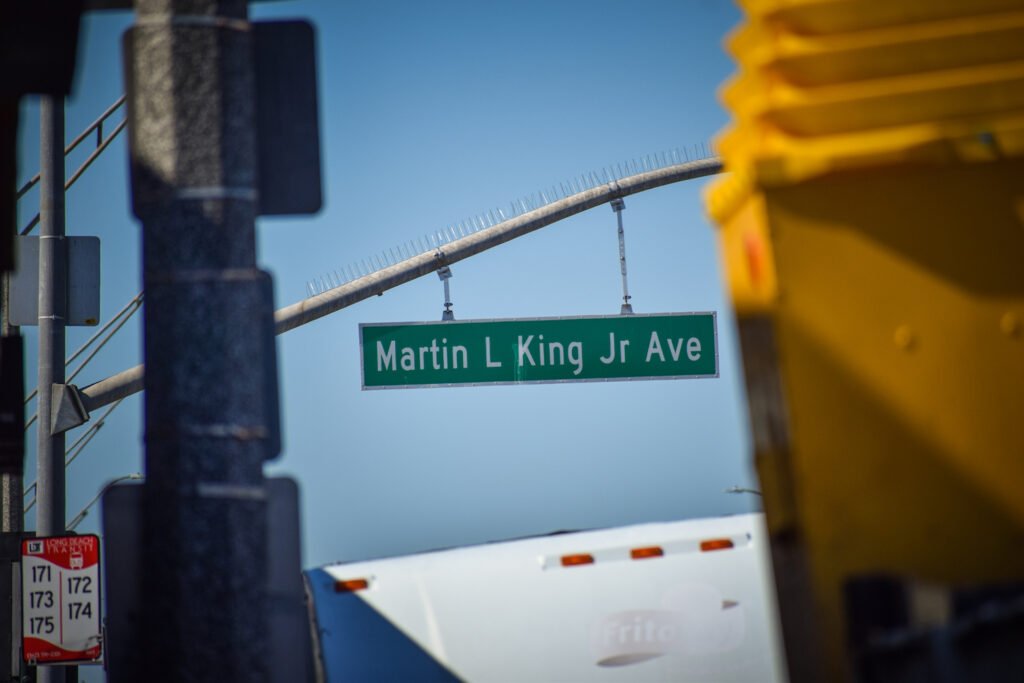
Gillis is not alone: Joe Croom, a lifelong Black Sixth District resident (and whose own sister, Sharon Diggs-Jackson, sits on the very commission determining the redistricting), had no clue of the redistricting process until his niece asked him if he had heard of the proposals.
“I was shocked to hear they could have the potential to divide up my neighborhood,” Croom said. “I feel like we should have been hearing about this long before the commission started meeting.”
And as the Black population within Long Beach, which saw a 13% loss from 2018 to 2019 alone, faces dwindling numbers census after census—with reasoning ranging from a lack of affordable housing and gentrification to a lack of social connectivity and political representation—the need for Black cohesion and preservation is paramount for residents.
“This isn’t about dominance but simply about preserving the Black community that has already been historically diminished,” Kenfe said. “And to be frank, I find the conversation about the need to unify the Cambodian community—the one that is hovering over this entire discussion—to be disingenuous at best because they have representation, they have unification.”
Standing at part of the core of the frustration among Black residents of the Sixth lies another sensitive issue: the drive from Cambodian-American leaders to unify the densest part of its population under one district.
And that narrative of a need for Cambodian unification goes back to 2018—and part of a community that is as diverse and complex as that of its Black counterpart.
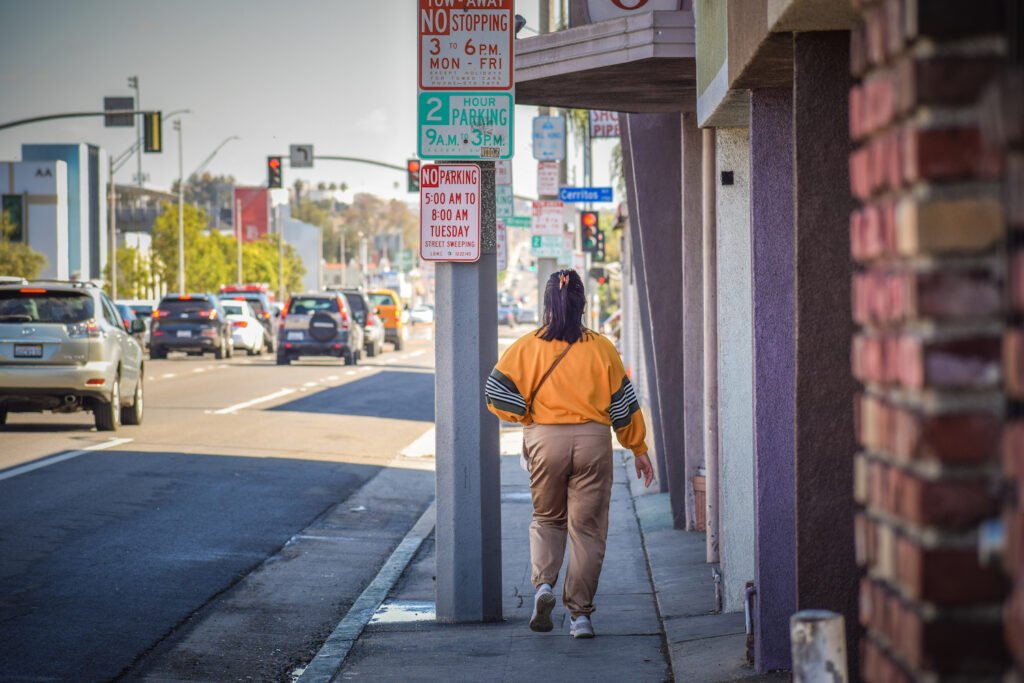
The redistricting process is a political necessity—and a controversial one at that
The redistricting process is certainly a controversial one, as cities typically develop a charter following federal mandate that designates how and when the process occurs. Per Long Beach’s former charter, the process was approached and approved through its city council, with each district having roughly equal populations that don’t deviate by 10%.
However, that very council-centric process was uprooted following the passage of Measure DDD in 2018, which created the Independent Redistricting Commission—meant to be independent of City Hall and its council—composed of elected residents to draw up the new maps.
That successful measure was heavily directed and led by local Cambodian leadership under the Equity for Cambodians group. And their proposal for the need for a citizen-led redistricting commission was that it could create a centralized district for the Cambodian community to help increase its chances of having political representation on the city council. While Cambodia Town shares a small portion of its eastern edge with the Fourth District, it largely resides in the Sixth already, sharing borders with the Second at its southern base and the First at its westernmost edge; however, surrounding neighborhoods that dip into other districts are home to many Cambodians outside of the Sixth.
This heavy focus solely on unifying the Cambodian community—possibly at the cost of ripping the Black community apart—pins much of the ire of many Black residents.
“There’s no common cause or thread that brings everyone together in the Sixth District,” Gillis said. “From the Latinos to the Cambodians to the Black community—and I keep on making excuses: ‘Oh, it’s the new councilwoman [Suely Saro], she’s gettin’ her feet wet.’ But what a powerful statement she would have made if she rallied everyone in the Sixth district together on a common idea of connection. A huge, huge missed opportunity.”
Even more, the need for that unification seems less potent just three years after it was argued for because the Cambodian community saw its first councilmember elected—before any form of redistricting even began discussion—with the election of Cambodian-American Suely Saro. And while Saro and her supporters point to the fact that some within the Cambodian community were disappointed at not being able to vote for her because of current district lines, hence still maintaining the need for redistricting, that argument falls flat for Black residents fearful of losing their tenuous political grasp on their core.
“What I find odd, though, is that this isn’t about the Cambodian community needing to unify for representation,” said Sixth District native Sharon McLucas. “Saro was elected before any type of redistricting happened. Why are you wanting to move up to PCH and push us out even more? Why?”

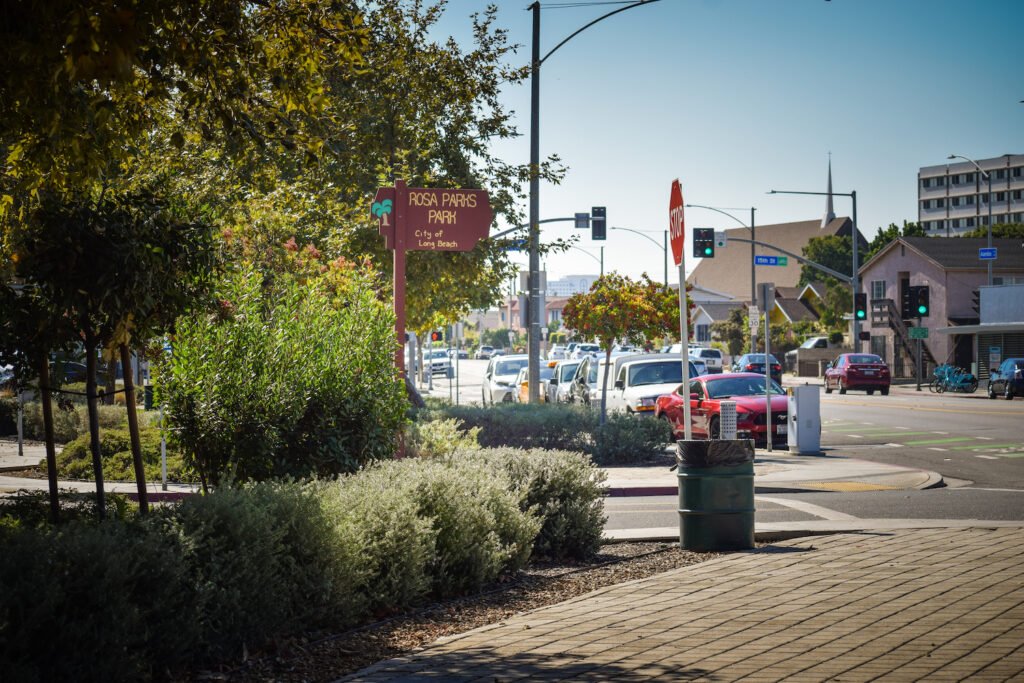
Kenfe and Gillis also noted this discrepancy: That the political clout of the Cambodian community is at a peak—and to destroy the historic Black core in the name of Cambodian unification is, as Kenfe said, “disingenuous.”
“Even the Cambodian community itself was divided on the issue when Measure DDD was first presented,” Kenfe said, noting a small, concerted effort by some members of the Cambodian community to distance themselves from the ballot measure three years ago. “I’m fine with the tons of articles about the Cambodian community—but not all Cambodians are the same and to treat this continually as something which is desired by one single group as a whole is wrongfully framing an issue that affects more than one neighborhood.”
That idea—”Not all Cambodians are the same”—is one which is hard to grasp without understanding the nuances of the Cambodian community, which has been created over years and tiers of people coming in and out: You start with the elders, escaping a genocide, choosing Long Beach as their home and attempting to assimilate; you have their children, straddling the history and heritage of their parents with the history and heritage of their own birthplace, the United States; and you have an influx of Cambodian nationals, often from Chinese descent, coming into Long Beach with much more resources and economic power than the refugees which were forced to flee.
Reverberating Kenfe and Gillis’s sentiments that different communities aren’t connected in causes, the Cambodian community is seeing a generational shift in what they each desire.
“Different generations want different things,” said Cambodian-American and Sixth District native Dorothy Meas, whose mother fled the Khmer Rouge and still lives in the central part of Cambodian Town. “My mom isn’t as politically active as the younger Cambodians, who really want to build things when my parents didn’t really have much but did what they could. And in terms of Chinese-Cambodians, they too have very different histories since they were treated differently, especially in terms of education.”
This leads to a community divided, at least politically, according to Meas—and further cements Gillis’s perspective that Saro is perhaps required (and not just encouraged) to help coalesce communal desires rather than home in on singular issues.
Even more, a directive from Saro if taken could have tangible results: Third District Councilmember Suzie Price led a concerted effort to rally her district when it was shown in one map that she was actually drawn out of her own district, resulting in multiple commenters encouraging the commission to avoid the possibility of her removal.
“This needs to be seen as an opportunity for Saro,” Gillis said. “It shouldn’t be entirely framed or viewed as if African-Americans are fighting solely for their own self-interests. This needs to be a collective effort, where Saro can step up and bring her district together, to say: ‘Us Cambodians and our fellow Latinos and Blacks should not be fighting in silos. We should stand in a common effort.’ But we’re working in silos and not together.”
The districting commission’s next meeting is tomorrow, Oct. 27, at 6PM at City Hall, located at 411 W. Ocean Blvd. in DTLB. Residents of the Sixth District are encouraging fellow residents to come and speak as public comment will be open.
Editor’s Note: Sharon McLucas’s name was initially misspelled. It’s been corrected.

